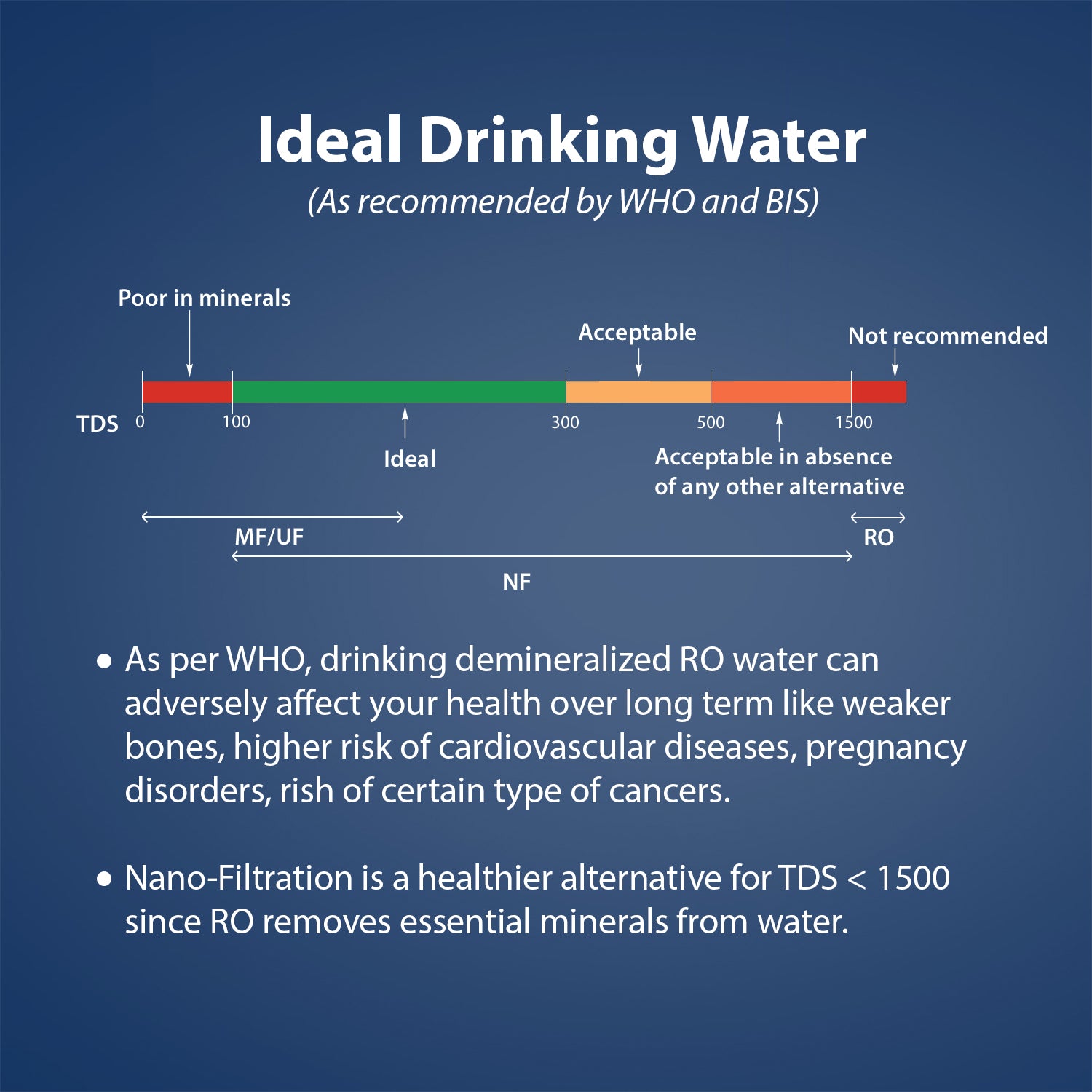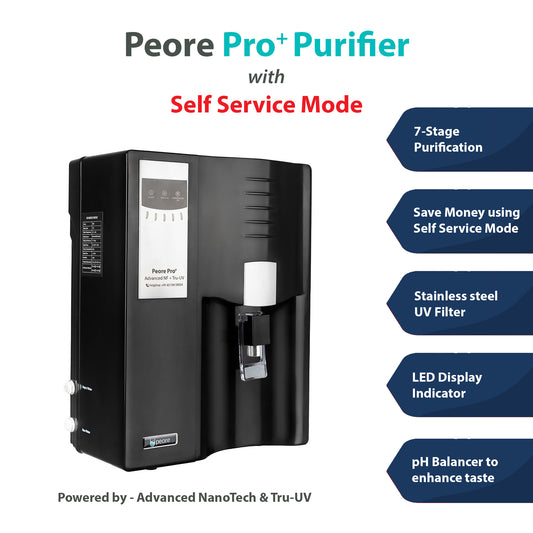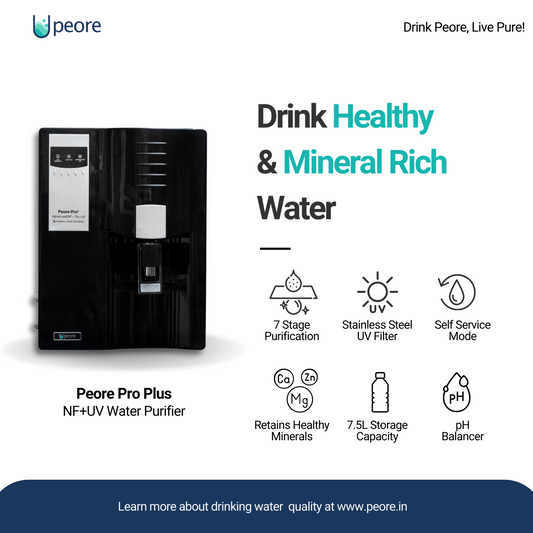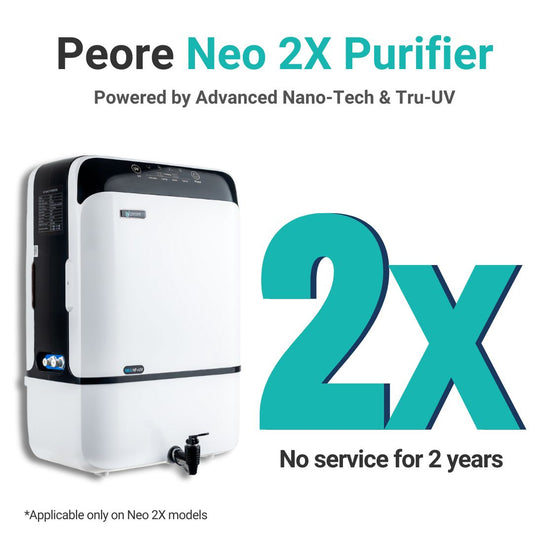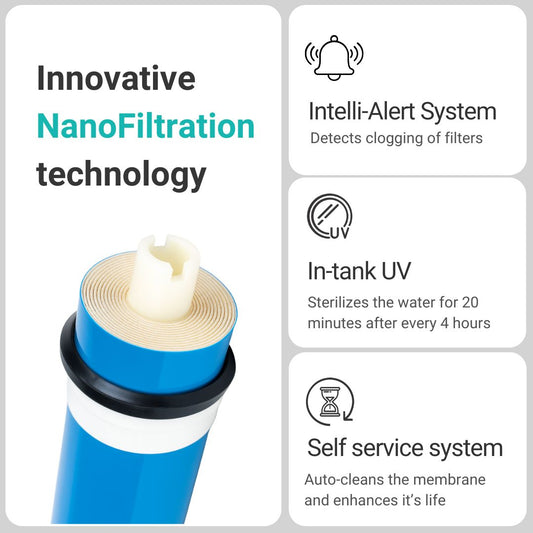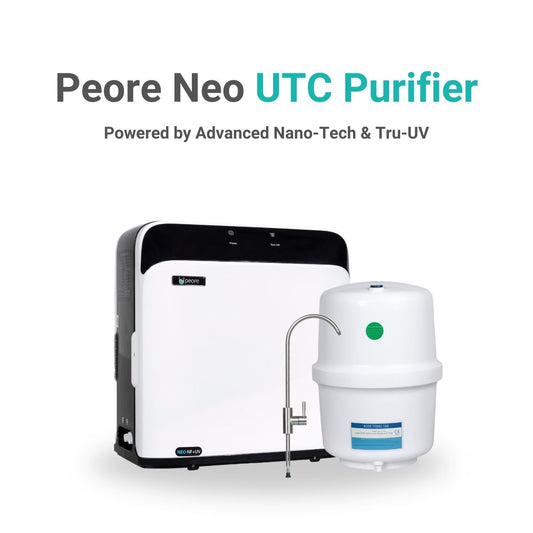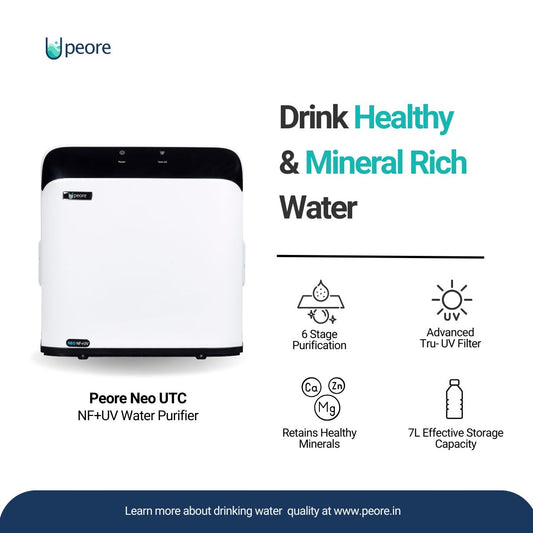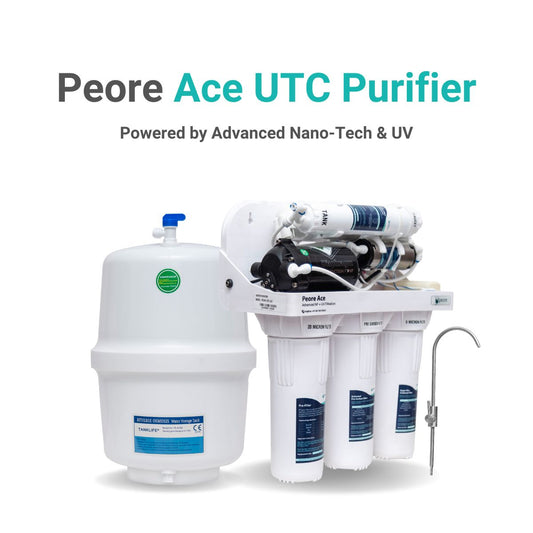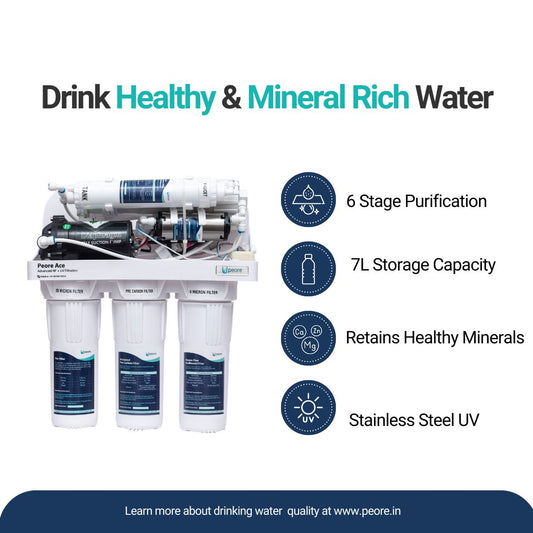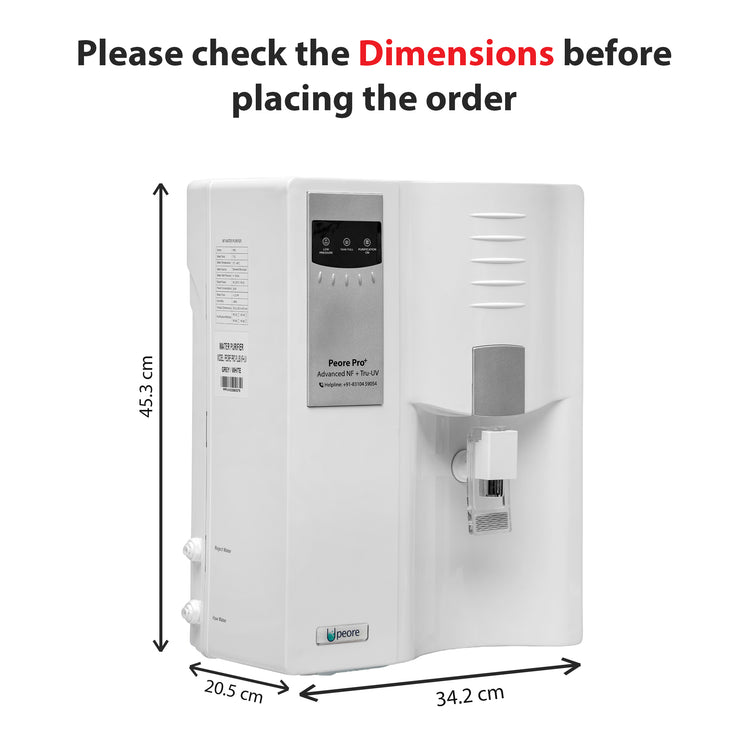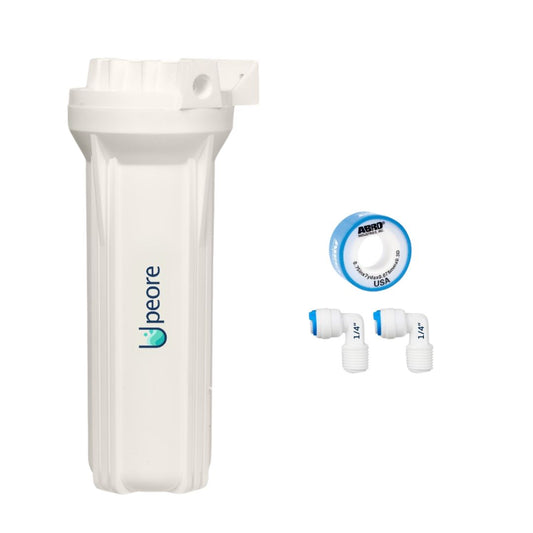Both NF and RO water purifiers are effective, but the choice depends on the TDS level of your water supply. RO purifiers are ideal for water with a TDS level above 1500 ppm, as they effectively remove high levels of contaminants. However, they can reduce TDS to as low as 5 ppm, which may not be ideal for long-term consumption. Many households in India use RO at lower TDS levels, leading to low-TDS drinking water, which can cause health issues such as low bone density and cardiovascular problems. Additionally, RO systems waste a significant amount of water, typically 3.5-4 liters for every liter of purified water.
On the other hand, NF water purifiers are more suitable for water with a TDS level below 1500 ppm. They effectively remove harmful contaminants while retaining essential minerals, ensuring a healthier TDS level of 100-300 ppm in drinking water, as recommended by WHO. NF technology also results in significantly less water wastage, typically 500 ml to 2 liters for every liter of purified water, making it a more sustainable choice.
To ensure safe and healthy drinking water, it is important to choose the right purification technology based on your water’s TDS level.









